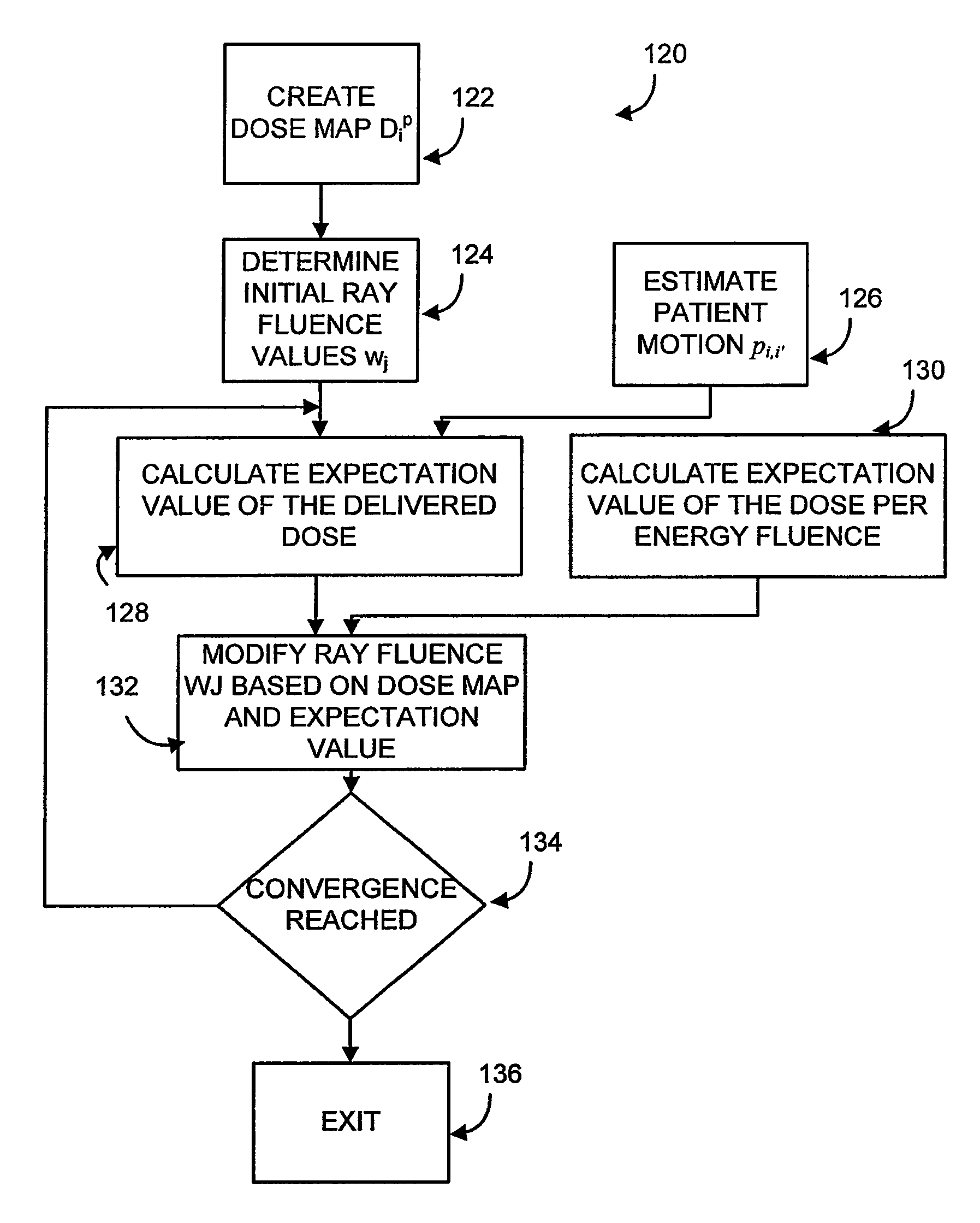System and method for optimization of a radiation therapy plan in the presence of motion
a radiation therapy and motion optimization technology, applied in the field of radiation therapy planning, can solve the problems of not receiving the correct dosage for the target area or parts of the patient area, and neither the location of the patient nor the target area is usually static,
- Summary
- Abstract
- Description
- Claims
- Application Information
AI Technical Summary
Benefits of technology
Problems solved by technology
Method used
Image
Examples
Embodiment Construction
[0024]Referring to FIG. 1, such a radiation therapy machine 10 includes a radiation source 12 producing a generally conical radiation beam 14′ emanating from a focal spot 18 and directed toward a patient 17 (not shown in FIG. 1). The conical radiation beam 14′ is collimated by a rectangular opaque mask 16 constructed of a set of rectangular shutter system blades to form a generally planar radiation fan beam 14 centered about a radiation fan beam plane 20. Whereas the present application describes a multi-leaf collimator-type radiation therapy machine system, the system and method described herein may be used with any therapy machine configured to perform intensity modulated radiation therapy.
[0025]A shutter system 22 is centered in the radiation fan beam 14 and about the radiation fan beam plane 20 prior to the radiation beam being received by the patient 17, and includes a plurality of adjacent trapezoidal leaves 30 which together form an arc of constant radius about the focal spot...
PUM
 Login to View More
Login to View More Abstract
Description
Claims
Application Information
 Login to View More
Login to View More - R&D
- Intellectual Property
- Life Sciences
- Materials
- Tech Scout
- Unparalleled Data Quality
- Higher Quality Content
- 60% Fewer Hallucinations
Browse by: Latest US Patents, China's latest patents, Technical Efficacy Thesaurus, Application Domain, Technology Topic, Popular Technical Reports.
© 2025 PatSnap. All rights reserved.Legal|Privacy policy|Modern Slavery Act Transparency Statement|Sitemap|About US| Contact US: help@patsnap.com



